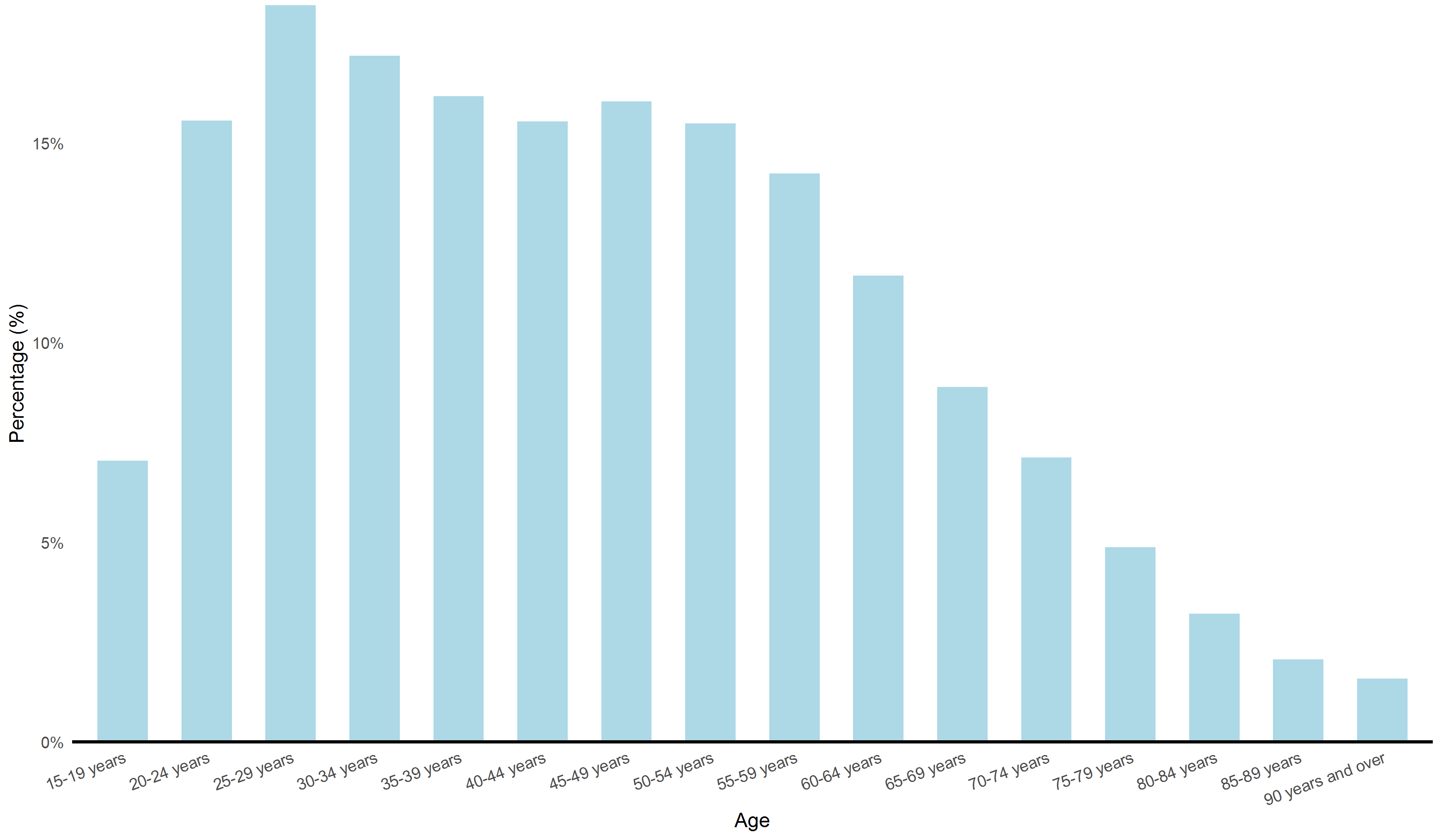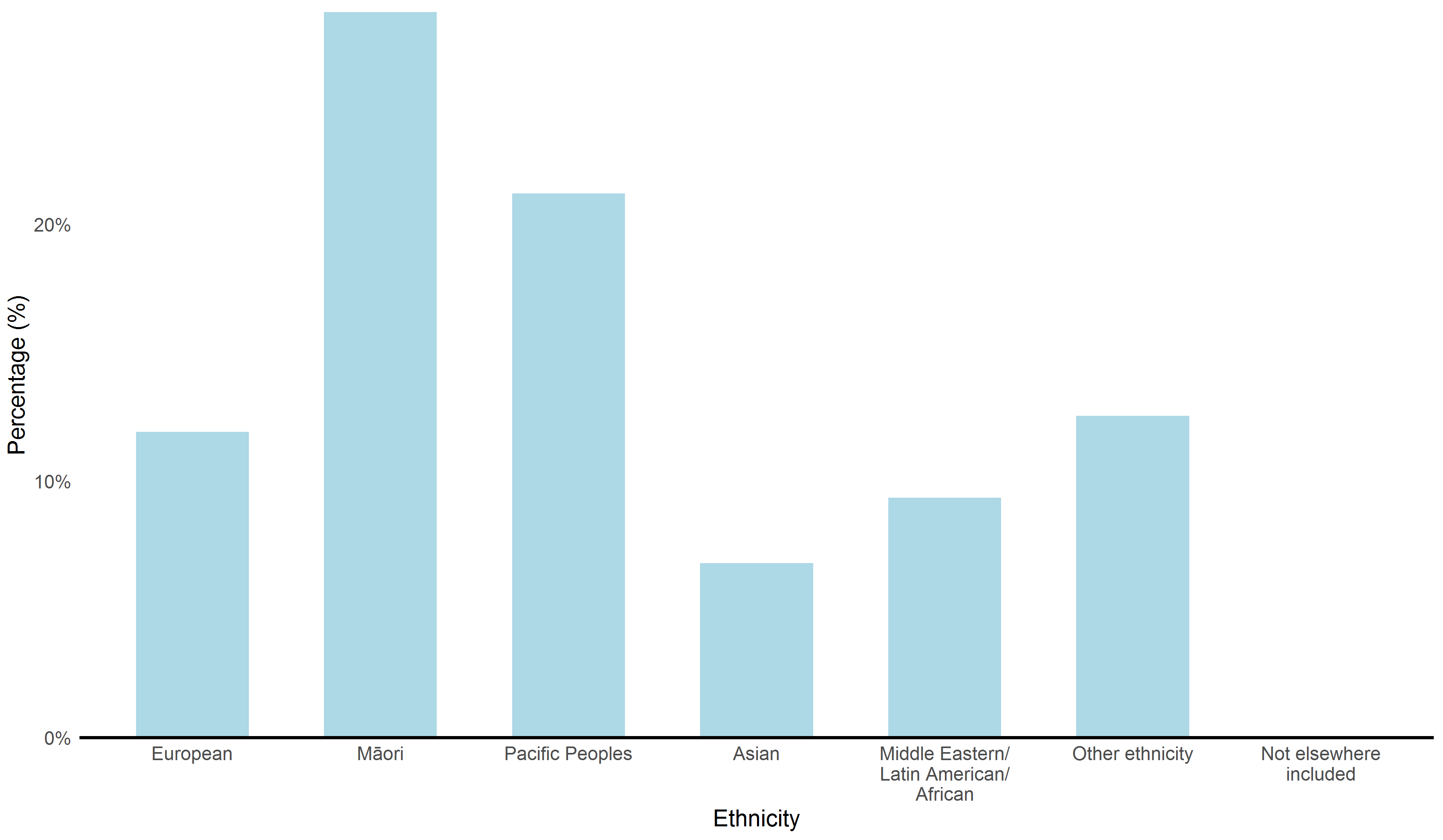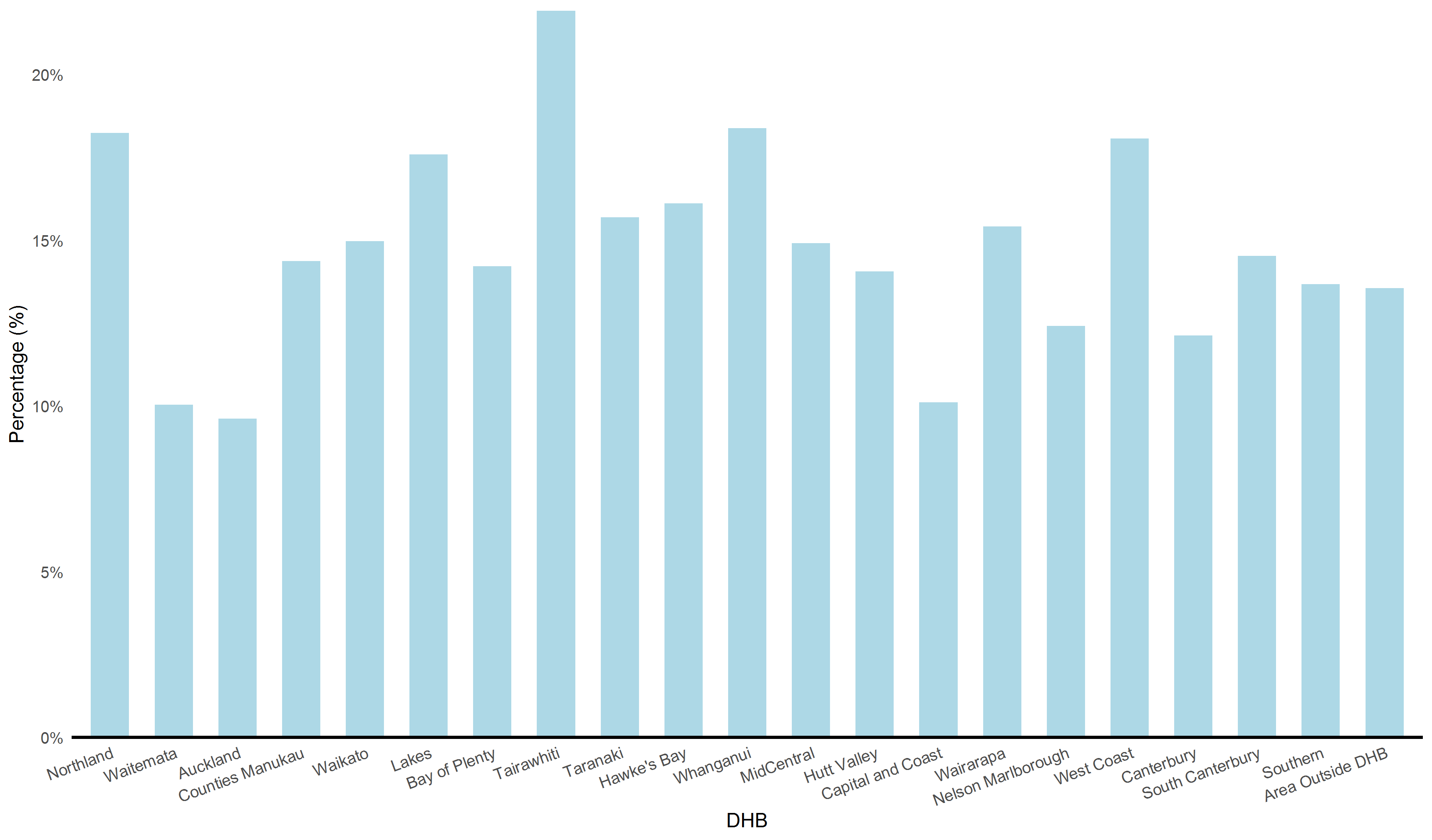The Government has set a long-term goal of reducing smoking prevalence and tobacco availability to minimal levels, thereby making New Zealand essentially a smokefree nation by 2025. It is necessary to have reliable information to help to track progress toward this goal. This section provides an overview of data showing smoking trends in New Zealand based on data contained in this website.
Has smoking prevalence changed?
Figure 1 combines data collected from different sources and shows that smoking prevalence among adults has decreased remarkably since the 1980s. In 2012/13, around one in six people aged 15 years or over were current smokers. It is also important to understand how many young people smoke. The orange line shows that the rate of current smoking among Year 10 students (aged 14-15 years) has decreased even more sharply than the rate for adults since the late 1990s.
Figure 1. Smoking prevalence in New Zealand from 1983 to 2017
(Sources: AC Neilson; Census, Statistics New Zealand; New Zealand Tobacco Use Survey, Ministry of Health; New Zealand Health Survey, Ministry of Health; Year 10 Snapshot Survey, Action on Smoking and Health.) (View full graph)
Which areas have the highest rates of smoking?
The map in Figure 2 presents the smoking prevalence at the District Health Board level. The interactive map allows users to drill down to smoking prevalence and NZ deprivation index at the statistical area 1 or 2 level as well.
Figure 2. Cigarette smoking prevalence map at District Health Board level (left: North Island, right: South Island)
(Source: 2006, 2013, and 2018 Census, Statistics New Zealand) (View full map)
Does smoking differ among different groups?
It is important to assess whether smoking prevalence differs for different groups. Tracking this data helps to understand if all groups in the population are on track to meet the 2025 target. First, we find that there are age differences in the percentage of people who smoke daily (see Figure 2). Smoking is more common among adults aged 25-29 years (18%) and 30-34 years (17%).
 Figure 3. Smoking prevalence by age
Figure 3. Smoking prevalence by age
(Sources: New Zealand Census 2018, Statistics New Zealand) (View full graph)
Smoking prevalence also varies by ethnicity. Māori (28%), followed by Pacific Peoples (21%), show the highest rates of daily smoking. Asians show the lowest proportion, at 7%, while 12% of European smoke at least once a day.
 Figure 4. Smoking prevalence by ethnicity
Figure 4. Smoking prevalence by ethnicity
(Sources: New Zealand Census 2018, Statistics New Zealand) (View full graph)
Does smoking differ according to where people live?
We can also look at how many people smoke according to where they live. When looking at the data by District Health Board (DHB) we find that smoking prevalence is highest in Tairawhiti (22%), followed by Whanganui (18%), Northland (18%), West Coast (18%) and Lakes (18%). On the other hand, the DHBs incorporating major urban centres – Auckland, Waitemata, and Capital and Coast have the lowest smoking prevalence.
 Figure 5. Smoking prevalence by DHB
Figure 5. Smoking prevalence by DHB
(Sources: New Zealand Census 2013, Statistics New Zealand) (View full graph)
Tracking changes in use of cessation services
Data can also help track the number of people who access a range of different cessation services. Monthly data on how many people register to use the national Quitline shows that the number of registrations fluctuates over the course of the year, but has been increasing over time. Higher number of registrations are generally observed in January each year. A higher number of registrations are also found with the introduction of new laws and taxes. For example, in May 2010 there was a spike in registrations which coincided with the introduction of a tax excise increase and the equalisation of tax excise for roll-your-own tobacco and manufactured cigarettes. Since November 2015, Quitline has been managed by Homecare Medical and funded by the Ministry of Health.
Figure 6. Monthly registrations with the Quitline
(Sources: Quitline registration data, The Quit Group) (View full graph)
Tracking young people who have never smoked
Another factor that is tracked in tobacco control is the number of young people who have never smoked – that is those who report never smoking even a single puff of tobacco. According to the latest data, around three-quarters of young people have never had a puff of tobacco.
Figure 7. Number of cigarettes smoked in life
(Sources: Youth Insights Survey 2012 to 2018, Health Promotion Agency) (View full graph)
How much tobacco is sold in New Zealand?
Another measure of tobacco control activity is the amount of tobacco actually sold in New Zealand. Monthly sales data shows that tobacco purchase varies depending on the time of the year. Further, between 2010 and 2016, the overall amount of tobacco purchased has been declining.
Figure 8. Four-weekly equivalent cigarettes sale volume
(Sources: AC Nielson) (View full graph)